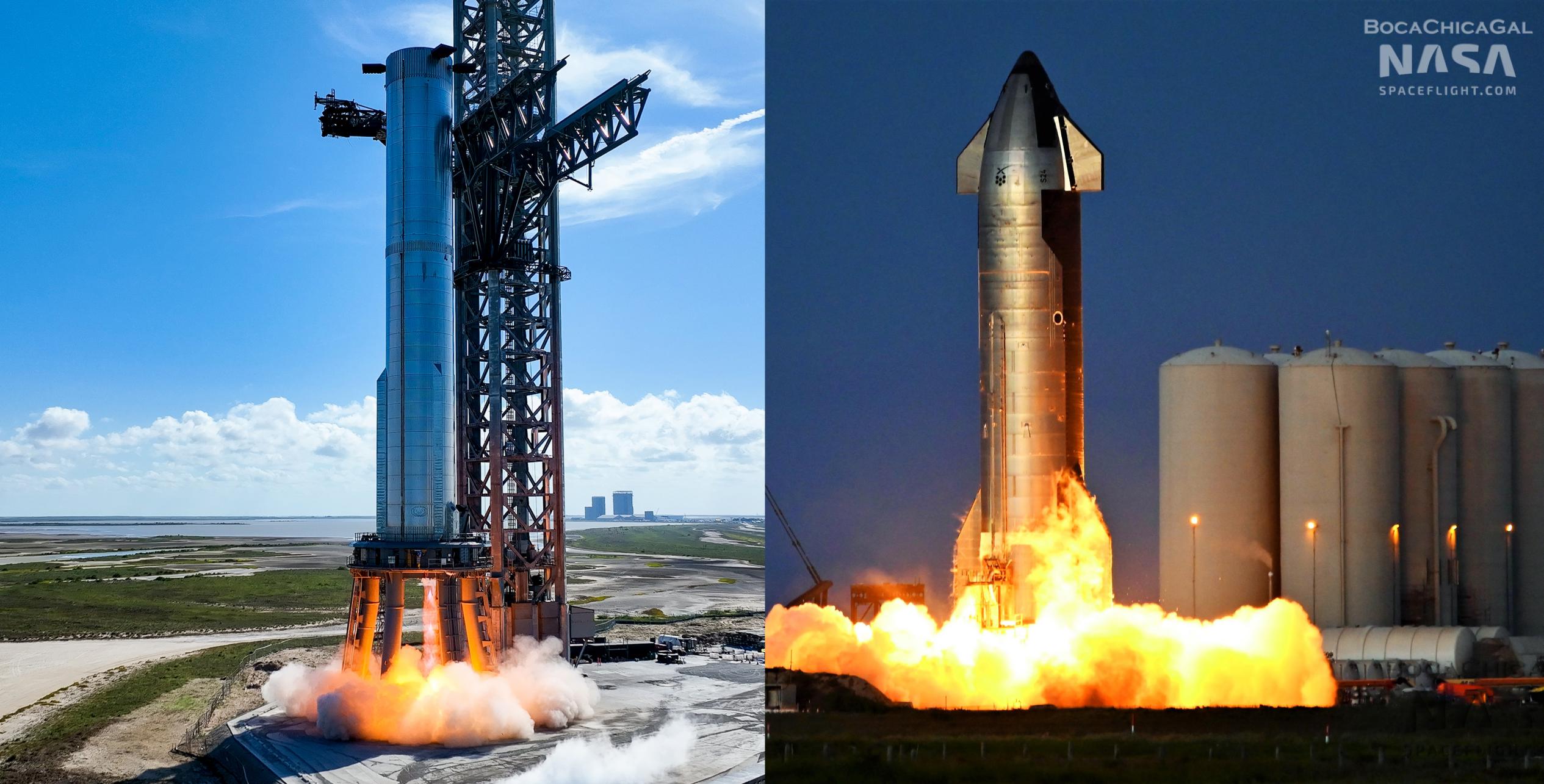

News
SpaceX preps Starship, Super Heavy for another week of Raptor testing
SpaceX continues to work around the clock to prepare its latest Starship and Super Heavy booster prototypes for another week of testing – likely focused on firing up the Raptor engines installed on each vehicle.
Known as Booster 7 and Ship 24, SpaceX has been slowly testing both prototypes for approximately four months, beginning in April and May, respectively. Only in early August did the company cautiously begin attempting to ignite their Raptor engines as part of a process known as static fire testing – by far the most difficult and important part of qualifying both vehicles for flight.
Thanks to progress made in 2021, SpaceX already has significant experience testing an earlier orbital-class Starship prototype on the ground, but the process of testing Ship 24 is still fresh and unfamiliar for a number of reasons. For Booster 7, the challenges are even greater.
On top of major design changes made to Starship and Super Heavy over the last year as SpaceX continues to refine the rocket, the company also developed a substantially different version of its Raptor engine. Compared to Raptor V1, Raptor V2 almost looks like a new engine and can produce around 25% more thrust (230 tons versus 185 tons). SpaceX has also tweaked how the engine operates, particularly around startup and shutdown, further weakening the value of past experience testing Raptor V1 and V1.5 engines on Ship 20 and Boosters 3 and 4.
In other words, with Ship 24 and Booster 7 engine testing, it’s possible that SpaceX is effectively starting from scratch. Many aspects of testing – propellant conditioning, thermal characteristics, tanking, detanking, certain test stands – are likely mostly unchanged, but almost every aspect of a rocket is affected by its engines.
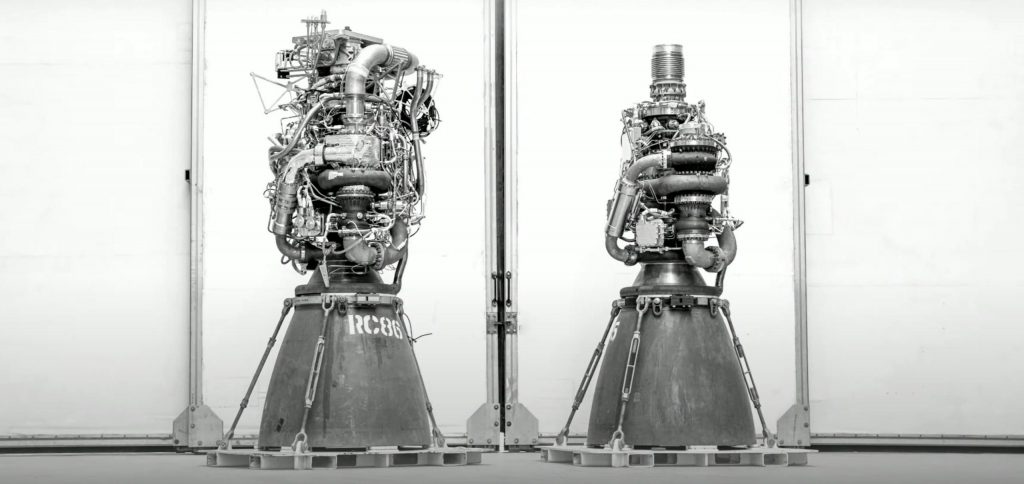
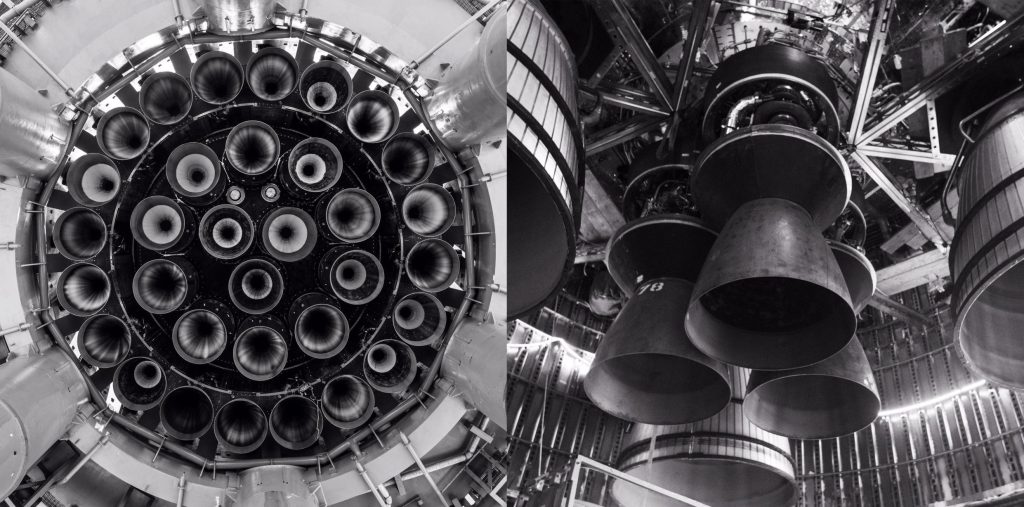
Before SpaceX began testing Raptor V2 engines on Starship and booster prototypes, it wasn’t clear if the changes between V1.5 and V2 would invalidate a lot of prior testing. After the start of Booster 7 and Ship 24 static fire testing, it’s now clear that a lot of that earlier work has to be redone. It’s also clear that despite some of the simplifications in Raptor V2’s design, operating the engine on Starship and Super Heavy is much harder get get right.
Since mid-July, SpaceX has completed around 15-20 ‘spin-prime’ tests between Ship 24 and Booster 7 – more of that kind of test than any other prototype in the history of Starbase has performed. Spin-prime tests flow high-pressure gas through Raptor’s pumps to spin them up without igniting anything. It’s unclear why so many of those tests are being done, what SpaceX is gaining from it, or why the company appears to have completely stopped conducting preburner tests (a more life-like spin-prime with partial combustion).
Regardless, eight weeks after the start of engine testing, Booster 7 has only performed three static fires (two with one engine, one with a max of three or four engines), and Ship 24 has only completed one static fire with two engines. Before either vehicle can be considered ready for flight, a day that could easily never come, each will likely need to conduct multiple successful static fires with all of their Raptor engines (6 on S24 and 33 on B7).
If the pace of Booster 7 testing doesn’t change, the vehicle could be months away from a full 33-engine static fire attempt – perhaps the single most important and uncertain test standing between SpaceX and Starship’s first orbital launch attempt. Ship 24’s path to flight readiness should be simpler, but it appears to be struggling almost as much.
According to CEO Elon Musk, “an intense effort is underway” to ensure that Super Heavy B7’s Raptor engines are well contained during anomalies, so that one engine violently failing won’t damage or destroy the booster, other engines, or the launch pad. That could certainly complicate the process of testing Booster 7, and it’s likely that SpaceX is taking some of the same actions to protect Ship 24.
In early September, after a partially successful Booster 7 static fire (its first multi-engine test) and numerous additional Ship 24 tests that failed to achieve ignition, SpaceX replaced engines on both vehicles. Booster 7 had one of 13 Raptor Center engines swapped out, while Ship 24 had one of its three Raptor Vacuum engines replaced.
On September 5th, SpaceX distributed a safety alert to Boca Chica’s few remaining residents, confirming that it wants to restart testing as early as Tuesday, September 6th. Especially as of late, that alert guarantees nothing, but it does at least open the door for SpaceX if Ship 24, Booster 7, and the positions of the stars happen to be in the right mood between 8am and 8pm CDT. Additional opportunities are available on September 7th, 8th, 9th, and 12th.
Elon Musk
Tesla reveals it is using AI to make factories more sustainable: here’s how
Tesla is using AI in its Gigafactory Nevada factory to improve HVAC efficiency.
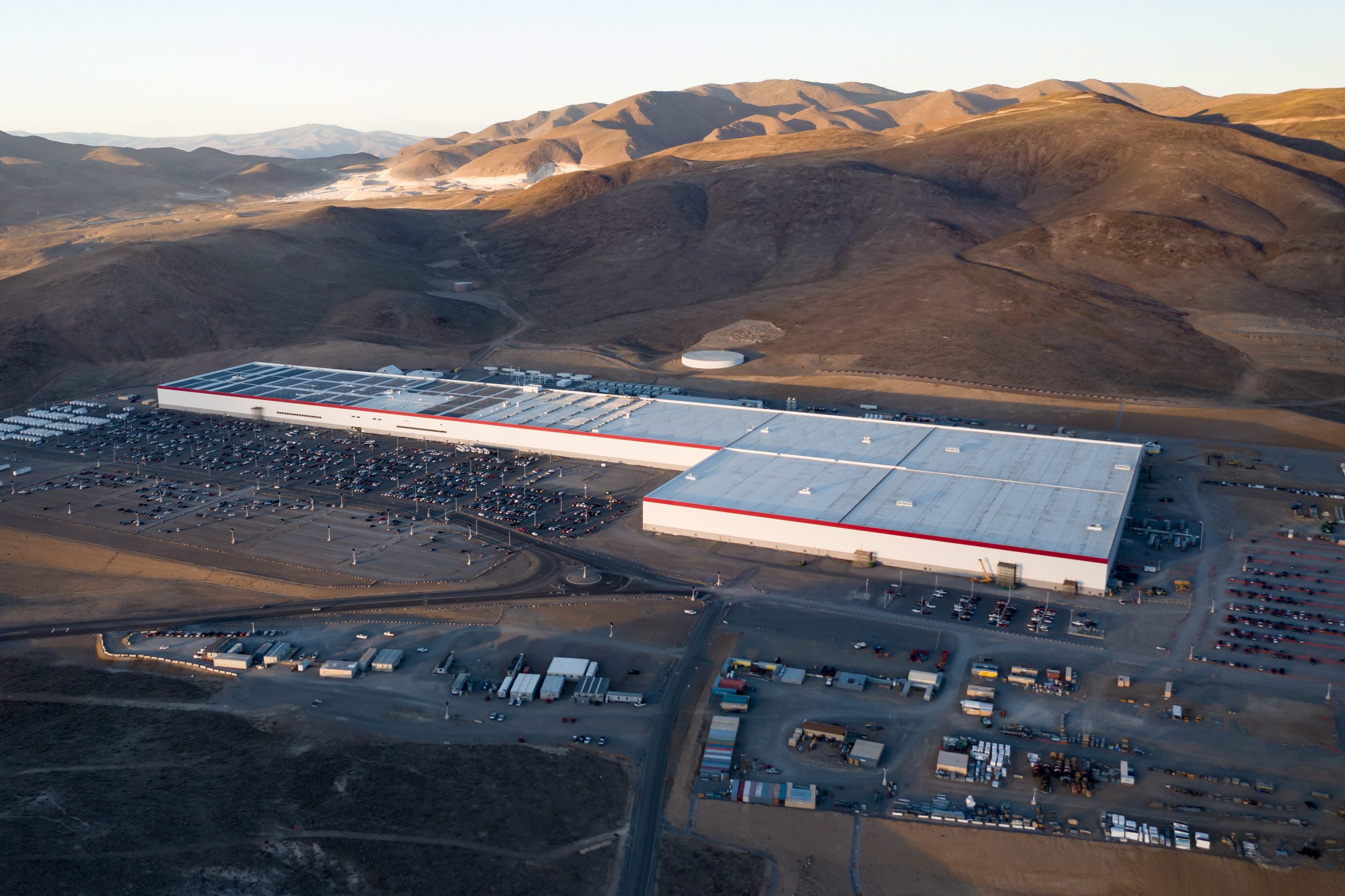
Tesla has revealed in its Extended Impact Report for 2024 that it is using Artificial Intelligence (AI) to enable its factories to be more sustainable. One example it used was its achievement of managing “the majority of the HVAC infrastructure at Gigafactory Nevada is now AI-controlled” last year.
In a commitment to becoming more efficient and making its production as eco-friendly as possible, Tesla has been working for years to find solutions to reduce energy consumption in its factories.
For example, in 2023, Tesla implemented optimization controls in the plastics and paint shops located at Gigafactory Texas, which increased the efficiency of natural gas consumption. Tesla plans to phase out natural gas use across its factories eventually, but for now, it prioritizes work to reduce emissions from that energy source specifically.
It also uses Hygrometric Control Logic for Air Handling Units at Giafactory Berlin, resulting in 17,000 MWh in energy savings each year. At Gigafactory Nevada, Tesla saves 9.5 GWh of energy through the use of N-Methylpyrrolidone refineries when extracting critical raw material.
Perhaps the most interesting way Tesla is conserving energy is through the use of AI at Gigafactory Nevada, as it describes its use of AI to reduce energy demand:
“In 2023, AI Control for HVAC was expanded from Nevada and Texas to now include our Berlin-Brandenburg and Fremont factories. AI Control policy enables HVAC systems within each factory to work together to process sensor data, model factory dynamics, and apply control actions that safely minimize the energy required to support production. In 2024, this system achieved two milestones: the majority of HVAC infrastructure at Gigafactory Nevada is now AI-controlled, reducing fan and thermal energy demand; and the AI algorithm was extended to manage entire chiller plants, creating a closed-loop control system that optimizes both chilled water consumption and the energy required for its generation, all while maintaining factory conditions.”
Tesla utilizes AI Control “primarily on systems that heat or cool critical factory production spaces and equipment.” AI Control communicates with the preexisting standard control logic of each system, and any issues can be resolved by quickly reverting back to standard control. There were none in 2024.
Tesla says that it is utilizing AI to drive impact at its factories, and it has proven to be a valuable tool in reducing energy consumption at one of its facilities.
Elon Musk
Tesla analysts believe Musk and Trump feud will pass
Tesla CEO Elon Musk and U.S. President Donald Trump’s feud shall pass, several bulls say.

Tesla analysts are breaking down the current feud between CEO Elon Musk and U.S. President Donald Trump, as the two continue to disagree on the “Big Beautiful Bill” and its impact on the country’s national debt.
Musk, who headed the Department of Government Efficiency (DOGE) under the Trump Administration, left his post in May. Soon thereafter, he and President Trump entered a very public and verbal disagreement, where things turned sour. They reconciled to an extent, and things seemed to be in the past.
However, the second disagreement between the two started on Monday, as Musk continued to push back on the “Big Beautiful Bill” that the Trump administration is attempting to sign into law. It would, by Musk’s estimation, increase spending and reverse the work DOGE did to trim the deficit.
Every member of Congress who campaigned on reducing government spending and then immediately voted for the biggest debt increase in history should hang their head in shame!
And they will lose their primary next year if it is the last thing I do on this Earth.
— Elon Musk (@elonmusk) June 30, 2025
President Trump has hinted that DOGE could be “the monster” that “eats Elon,” threatening to end the subsidies that SpaceX and Tesla receive. Musk has not been opposed to ending government subsidies for companies, including his own, as long as they are all abolished.
How Tesla could benefit from the ‘Big Beautiful Bill’ that axes EV subsidies
Despite this contentious back-and-forth between the two, analysts are sharing their opinions now, and a few of the more bullish Tesla observers are convinced that this feud will pass, Trump and Musk will resolve their differences as they have before, and things will return to normal.
ARK Invest’s Cathie Wood said this morning that the feud between Musk and Trump is another example of “this too shall pass:”
BREAKING: CATHIE WOOD SAYS — ELON AND TRUMP FEUD “WILL PASS” 👀 $TSLA
She remains bullish ! pic.twitter.com/w5rW2gfCkx
— TheSonOfWalkley (@TheSonOfWalkley) July 1, 2025
Additionally, Wedbush’s Dan Ives, in a note to investors this morning, said that the situation “will settle:”
“We believe this situation will settle and at the end of the day Musk needs Trump and Trump needs Musk given the AI Arms Race going on between the US and China. The jabs between Musk and Trump will continue as the Budget rolls through Congress but Tesla investors want Musk to focus on driving Tesla and stop this political angle…which has turned into a life of its own in a roller coaster ride since the November elections.”
Tesla shares are down about 5 percent at 3:10 p.m. on the East Coast.
Elon Musk
Tesla scrambles after Musk sidekick exit, CEO takes over sales
Tesla CEO Elon Musk is reportedly overseeing sales in North America and Europe, Bloomberg reports.

Tesla scrambled its executives around following the exit of CEO Elon Musk’s sidekick last week, Omead Afshar. Afshar was relieved of his duties as Head of Sales for both North America and Europe.
Bloomberg is reporting that Musk is now overseeing both regions for sales, according to sources familiar with the matter. Afshar left the company last week, likely due to slow sales in both markets, ending a seven-year term with the electric automaker.
Tesla’s Omead Afshar, known as Elon Musk’s right-hand man, leaves company: reports
Afshar was promoted to the role late last year as Musk was becoming more involved in the road to the White House with President Donald Trump.
Afshar, whose LinkedIn account stated he was working within the “Office of the CEO,” was known as Musk’s right-hand man for years.
Additionally, Tom Zhu, currently the Senior Vice President of Automotive at Tesla, will oversee sales in Asia, according to the report.
It is a scramble by Tesla to get the company’s proven executives over the pain points the automaker has found halfway through the year. Sales are looking to be close to the 1.8 million vehicles the company delivered in both of the past two years.
Tesla is pivoting to pay more attention to the struggling automotive sales that it has felt over the past six months. Although it is still performing well and is the best-selling EV maker by a long way, it is struggling to find growth despite redesigning its vehicles and launching new tech and improvements within them.
The company is also looking to focus more on its deployment of autonomous tech, especially as it recently launched its Robotaxi platform in Austin just over a week ago.
However, while this is the long-term catalyst for Tesla, sales still need some work, and it appears the company’s strategy is to put its biggest guns on its biggest problems.
-

 Elon Musk1 day ago
Elon Musk1 day agoTesla investors will be shocked by Jim Cramer’s latest assessment
-

 News6 days ago
News6 days agoTesla Robotaxi’s biggest challenge seems to be this one thing
-

 News2 weeks ago
News2 weeks agoTesla’s Grok integration will be more realistic with this cool feature
-

 Elon Musk2 weeks ago
Elon Musk2 weeks agoElon Musk slams Bloomberg’s shocking xAI cash burn claims
-
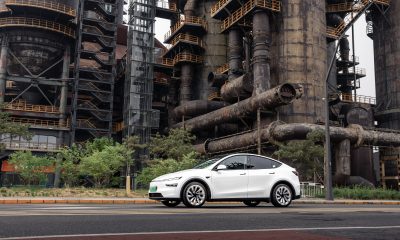
 News2 weeks ago
News2 weeks agoTesla China roars back with highest vehicle registrations this Q2 so far
-

 News2 weeks ago
News2 weeks agoTexas lawmakers urge Tesla to delay Austin robotaxi launch to September
-

 News2 weeks ago
News2 weeks agoTesla dominates Cars.com’s Made in America Index with clean sweep
-

 Elon Musk1 week ago
Elon Musk1 week agoFirst Look at Tesla’s Robotaxi App: features, design, and more




















